Winslow Homer: Force Of Nature
A rare treat at the National Gallery as Winslow Homer: Force of Nature brings us up close to the work of this little known (in the UK) American artist.
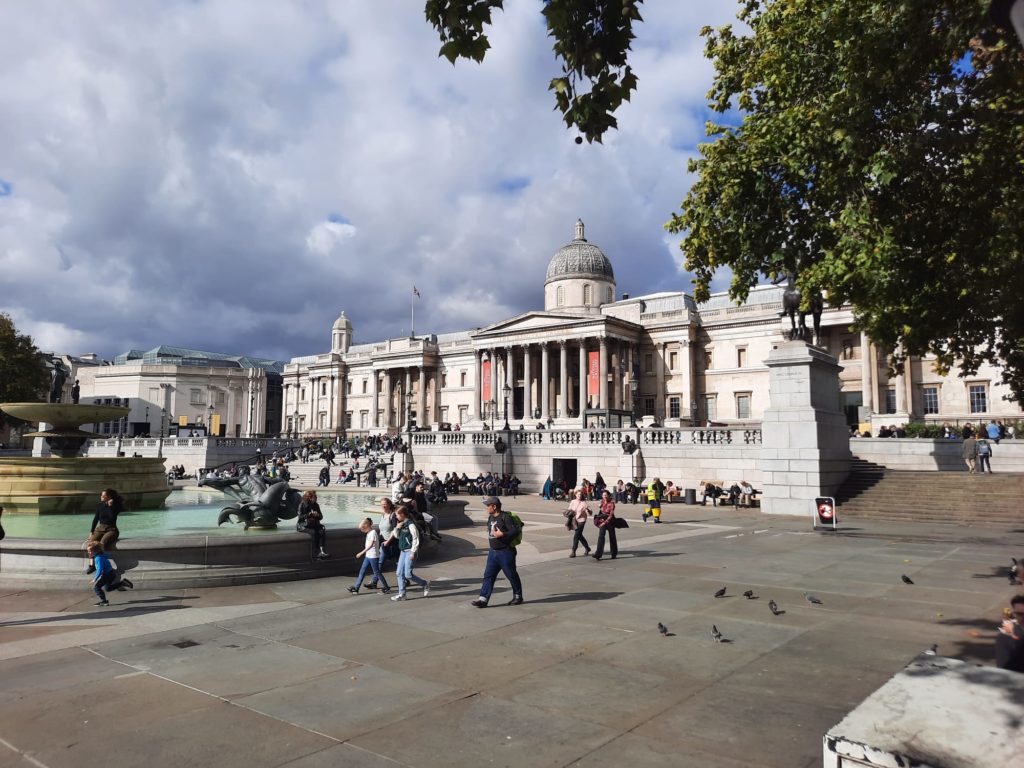
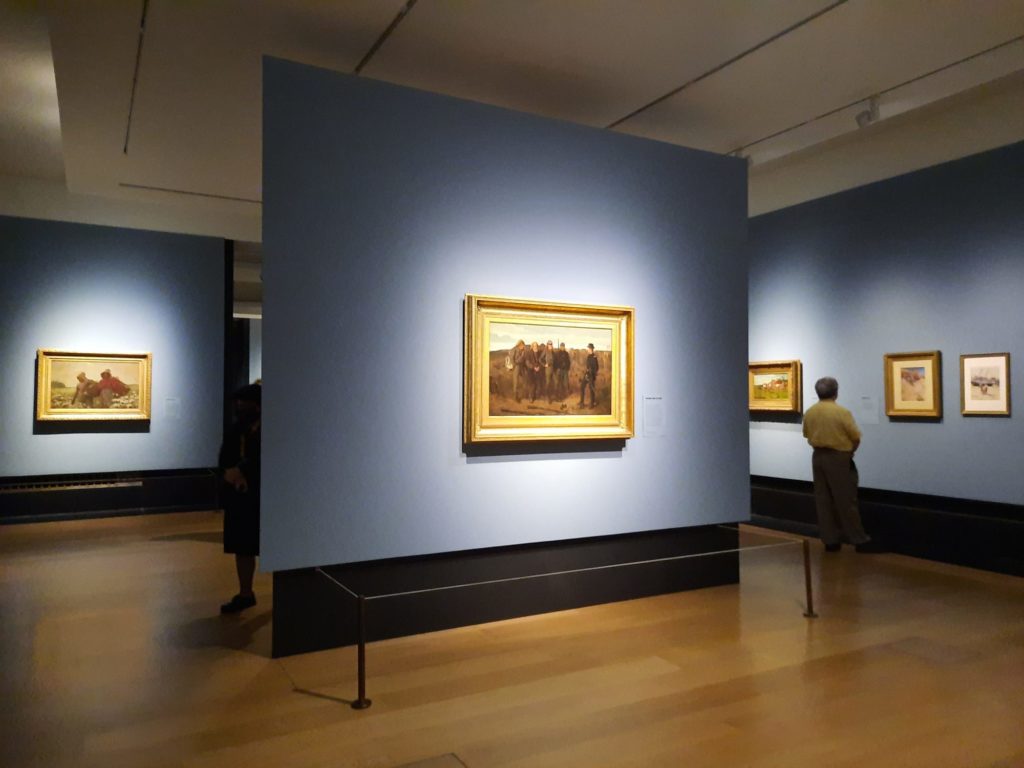
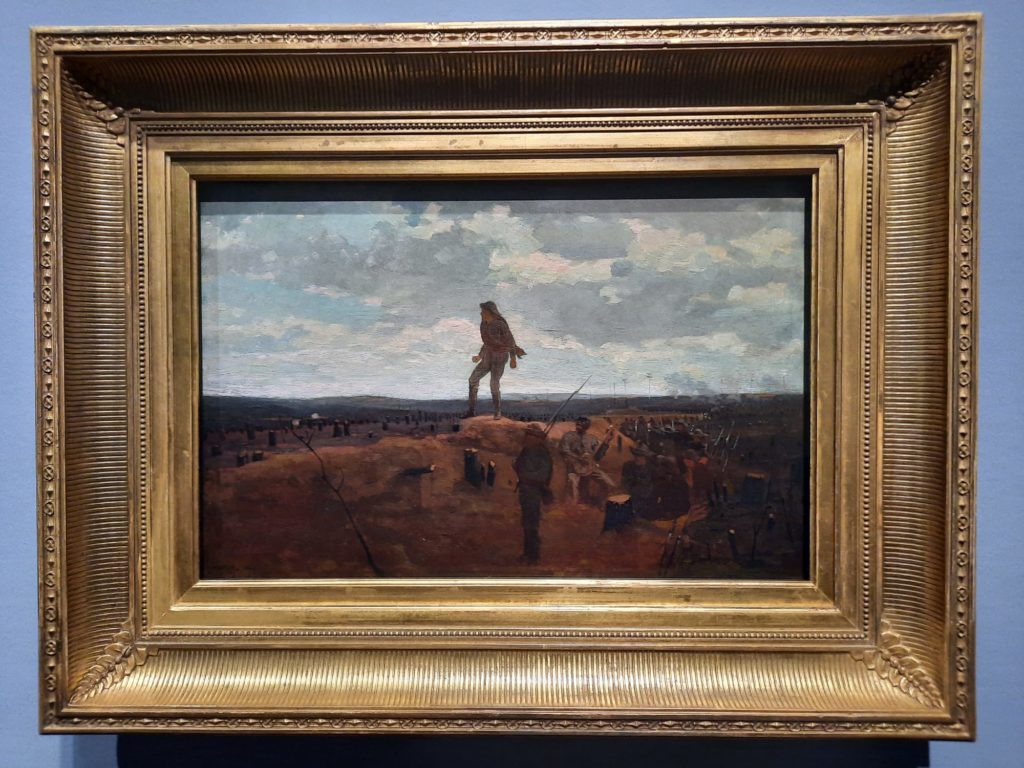
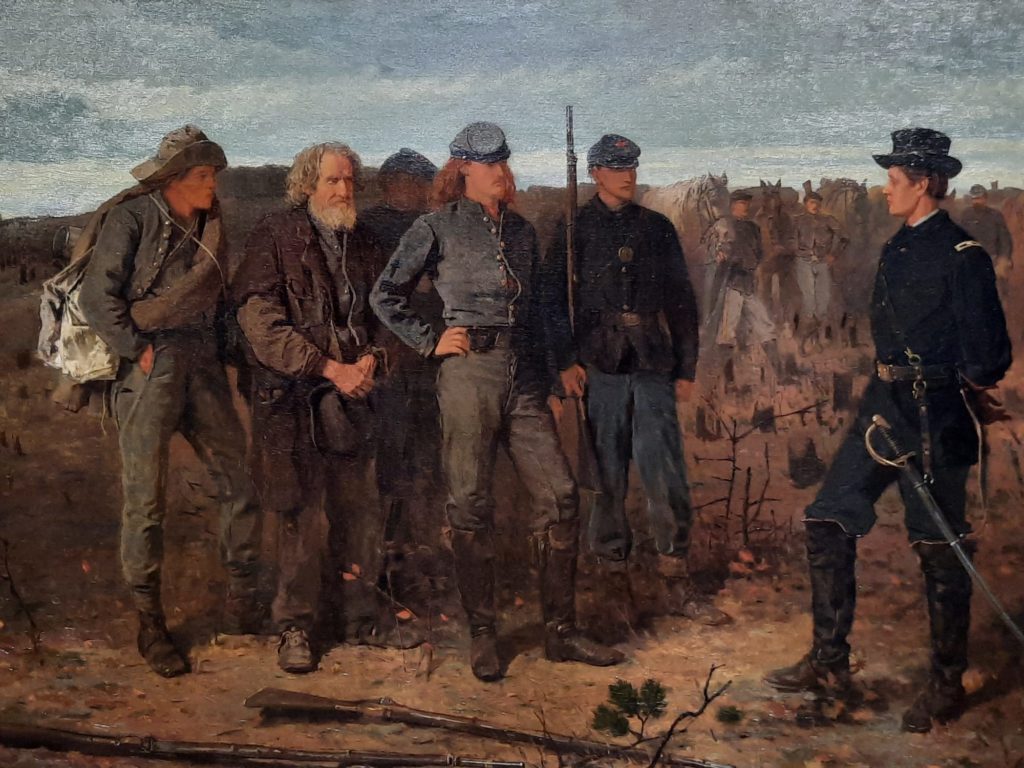
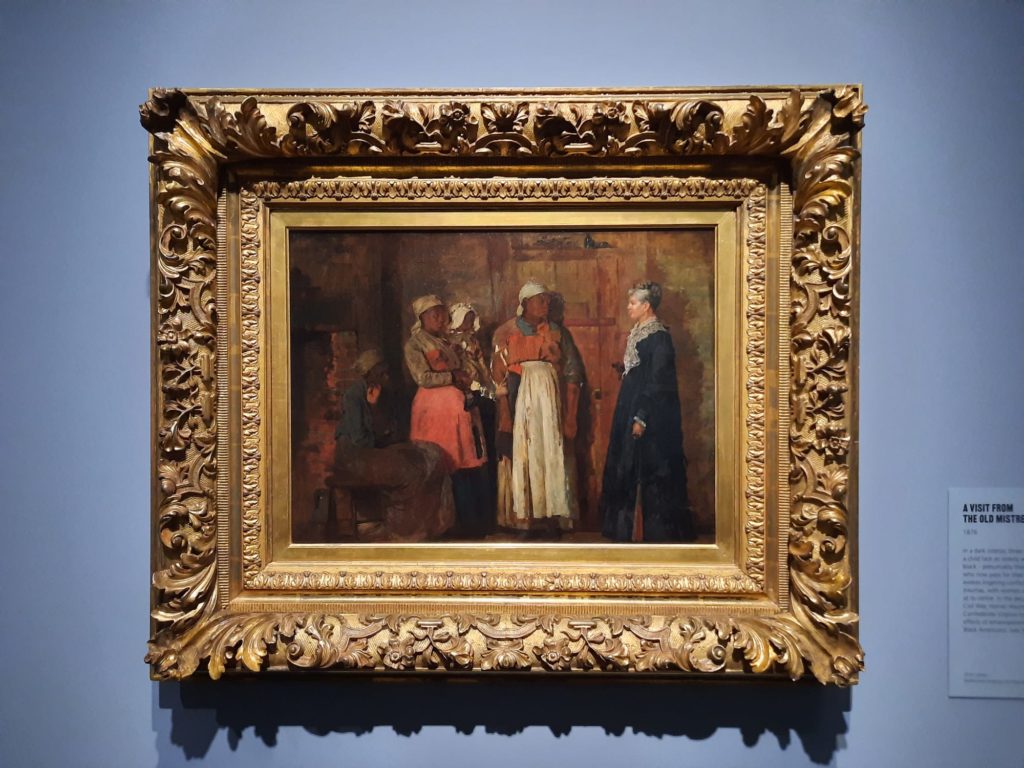
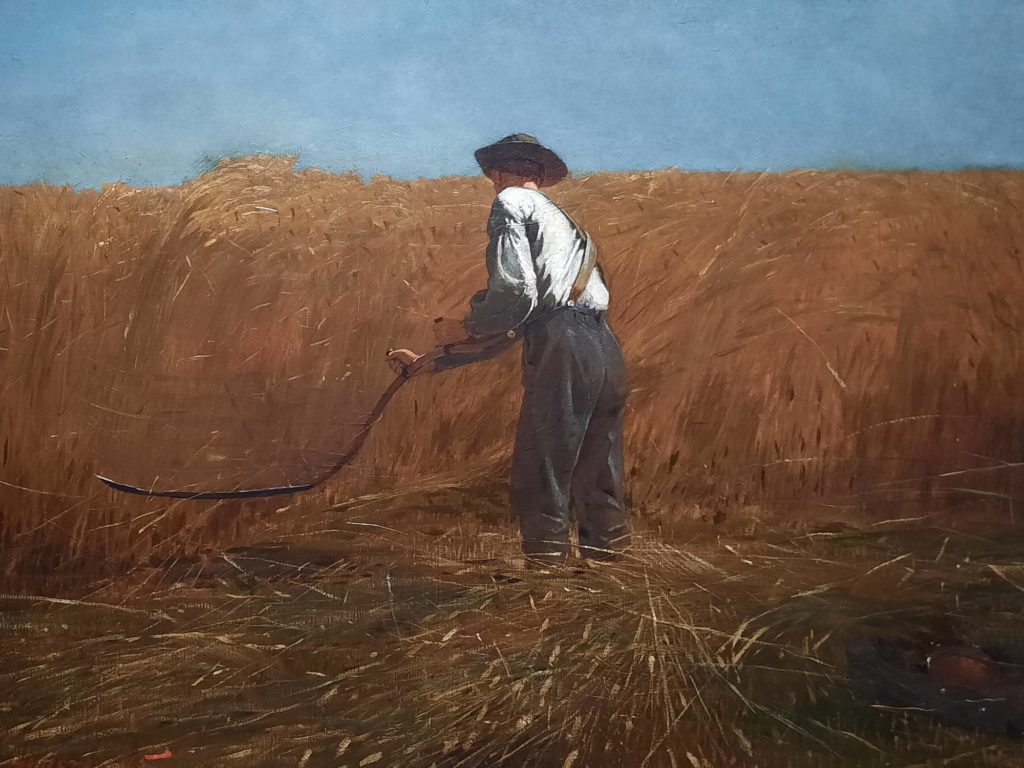
A Travelling Exhibition (One Of Many)
This probably sounds like a first world problem/privilege, and almost certainly is, but the increasingly common sharing of exhibitions between major institutions can be quite practical for the traveller. I didn’t make an effort when I was in New York to see the Winslow Homer exhibition at the Met. I knew it was coming to London. And likewise Cézanne at the Art Institute of Chicago (now at Tate Modern). A couple less things for the travel To Do list. And a handy byproduct of living in one of the world’s major art and museum centres. On the other hand it does require keeping on top of what’s coming up in all the big institutions…
Anyway, all this to say that I came close to seeing Winslow Homer’s work up close earlier in the year, but saved it for when I was back on home turf. I’m quite glad I did, as I was able recently to take a Friday off work and really take my time at the National Gallery seeing Winslow Homer: Force of Nature. Homer, born in 1836, is a preeminent figure in American art. He is well known even today to American audiences. Particularly for his landscapes and images of the Reconstruction period after the Civil War. Some of his best-known works like The Gulf Steam (on view here) have inspired later generations of artists including Kara Walker. He is less known to British audiences, and the exhibition at the National Gallery is thus a good opportunity to get to know his work.
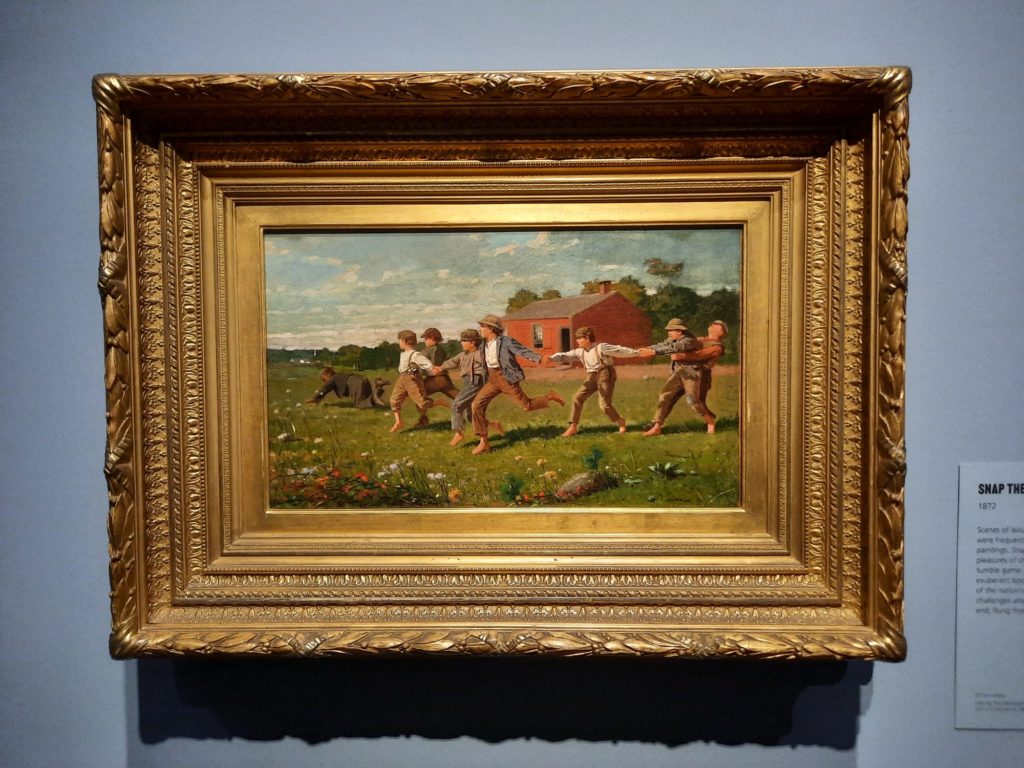
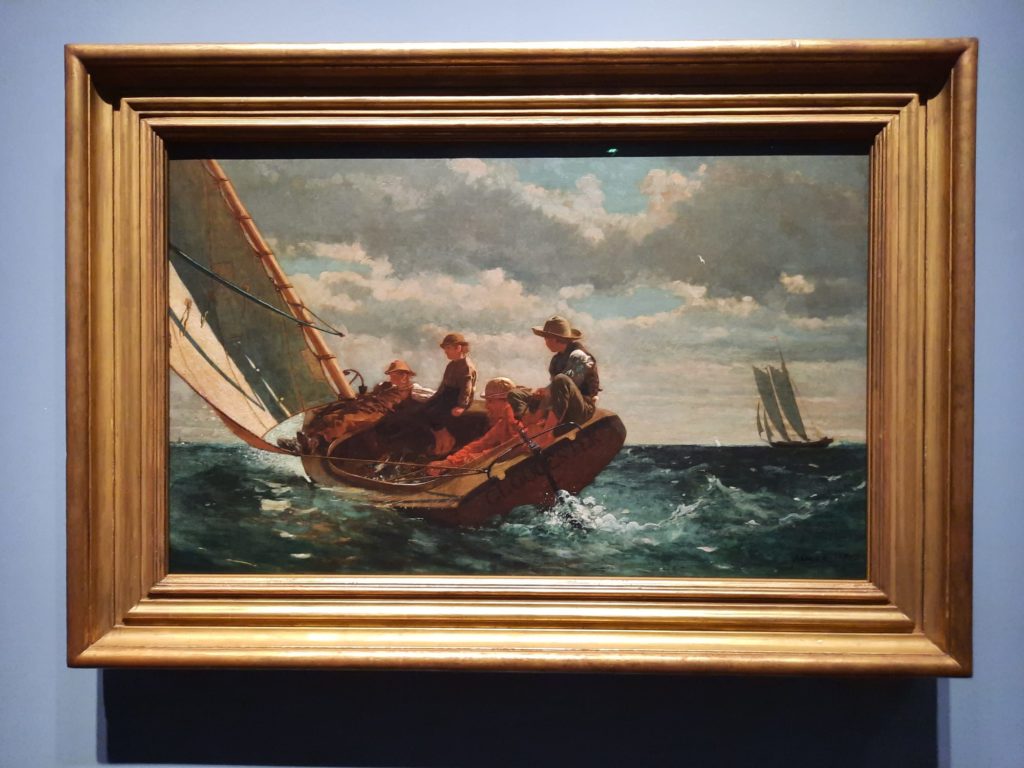
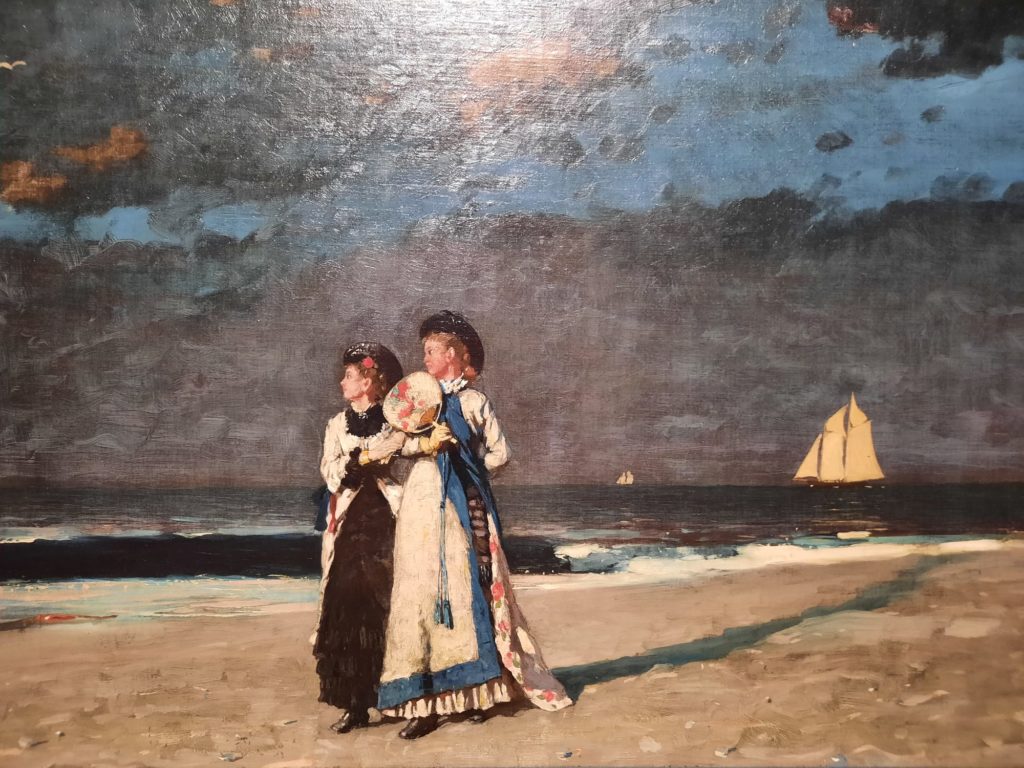
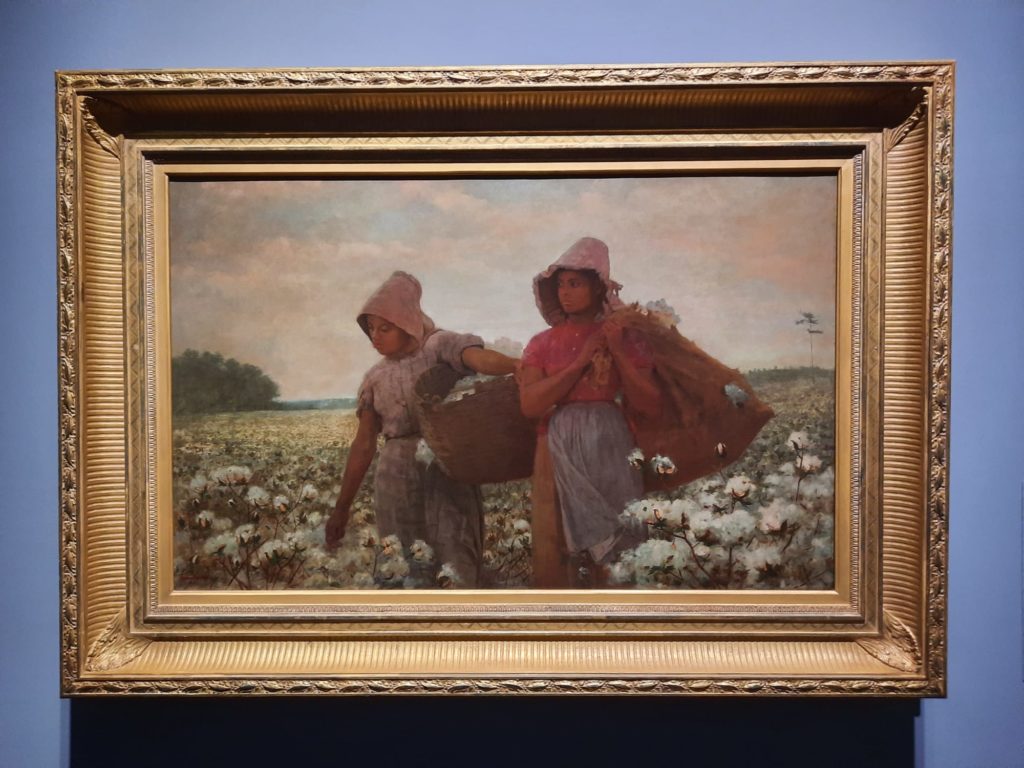
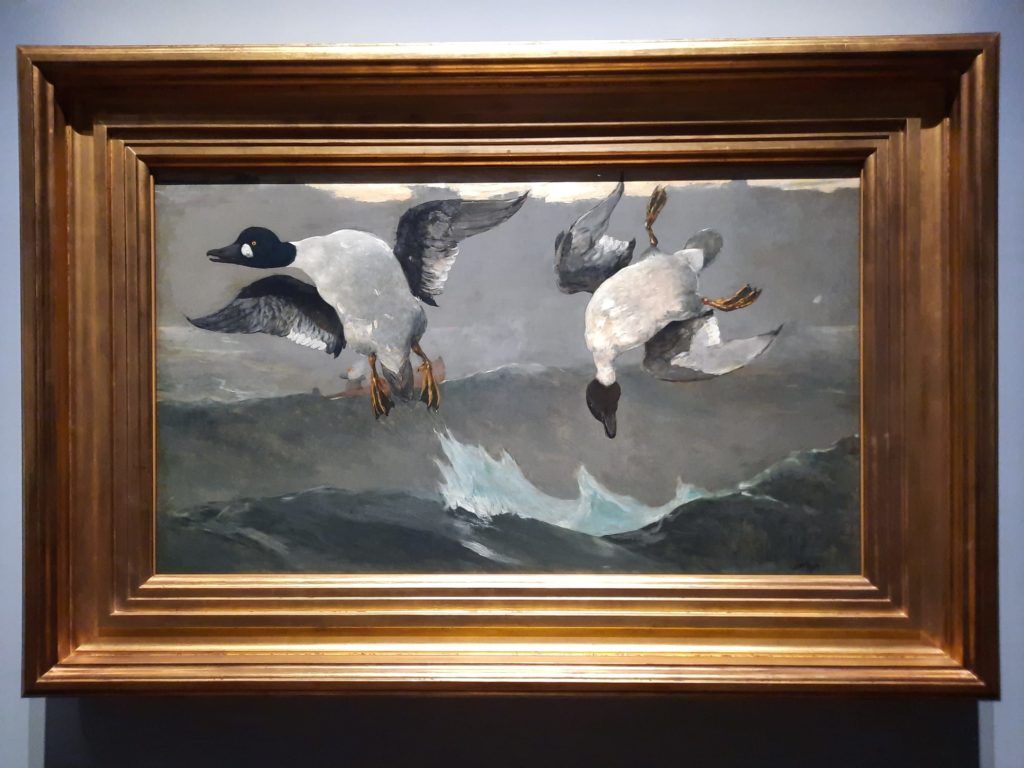
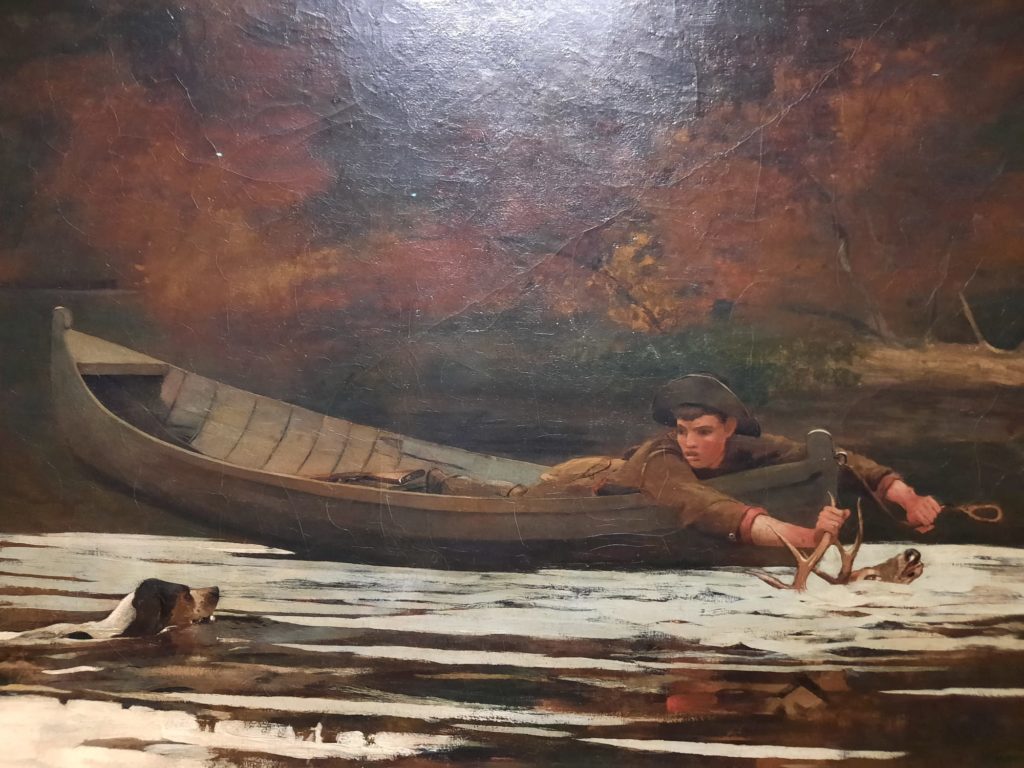
Winslow Homer: War Artist
The exhibition is grouped largely chronologically. As Homer lived and worked in a number of different locations throughout his life, this grouping is also broadly thematic. We start in an interesting place, especially enlightening perhaps for British audiences. As a young man, Homer worked for Harper’s Weekly, then an extremely popular illustrated magazine. He was dispatched to cover the American Civil War. Following Union troops for a time, he turned sketches into engravings and later paintings. After the war, he remained in the South for a time.
These paintings are interesting for a couple of reasons. The ones which deal directly with the Civil War are notable for the equality of depiction of the two sides. Both Union and Confederate soldiers are treated with dignity. A fact which perhaps alludes to the (unrealised) potential of the Reconstruction era to bring the two sides back together. His choice of subject matter and composition is also sometimes surprising. A soldier in a tree aiming a rifle, for instance, contains the potential for violence without depicting it head on.
Like his treatment of soldiers from both sides, Homer’s treatment of Black subjects in the Southern states after Emancipation is consistently dignified and egalitarian. According, at least, to the measure of his time. Homer paints formerly enslaved people in scenes with their former mistress; agricultural workers; and festive moments. There is knowledge of ongoing inequality, power imbalance and struggle that we must read into the paintings as modern viewers, but they nonetheless make a statement of their own.
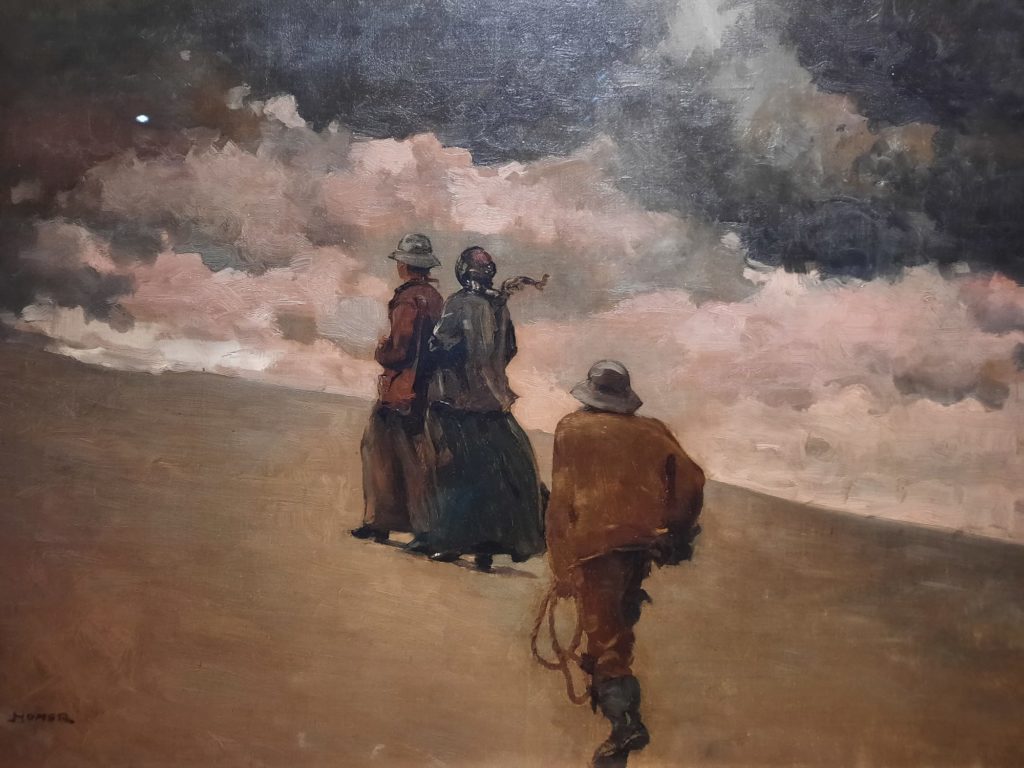
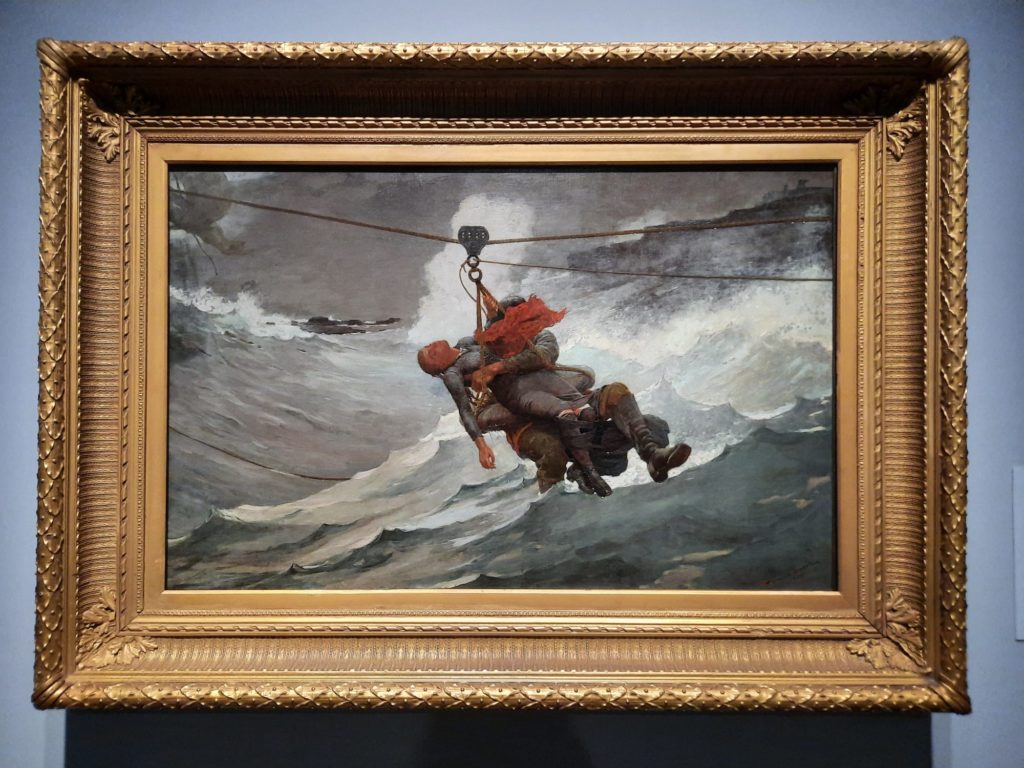
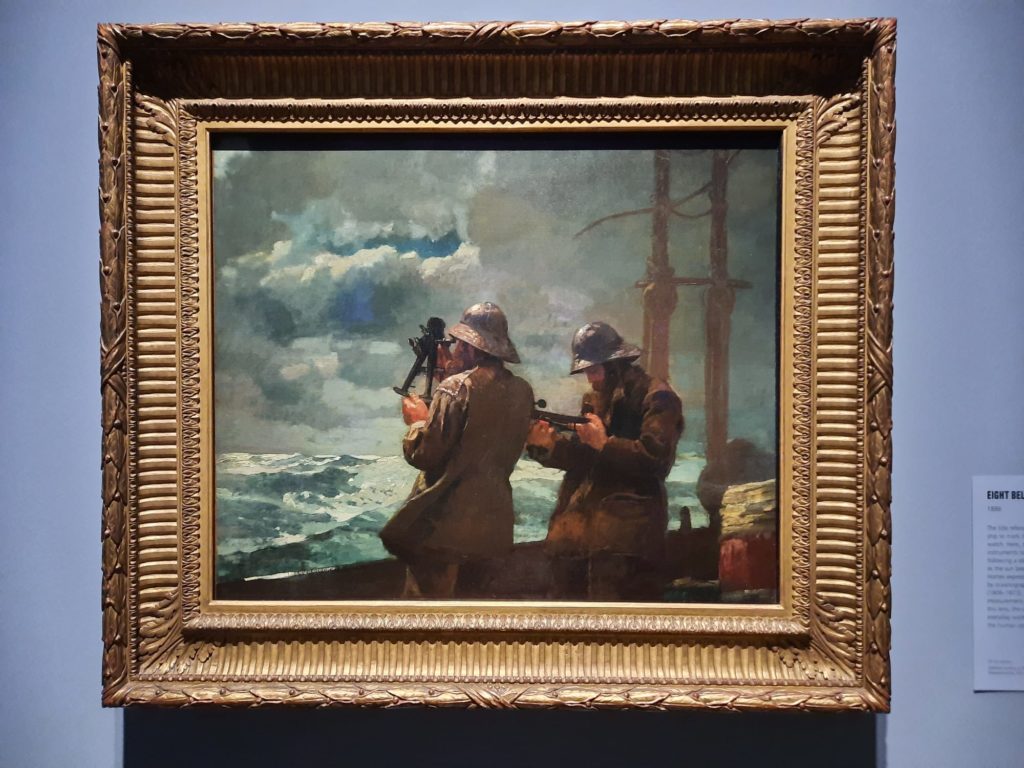
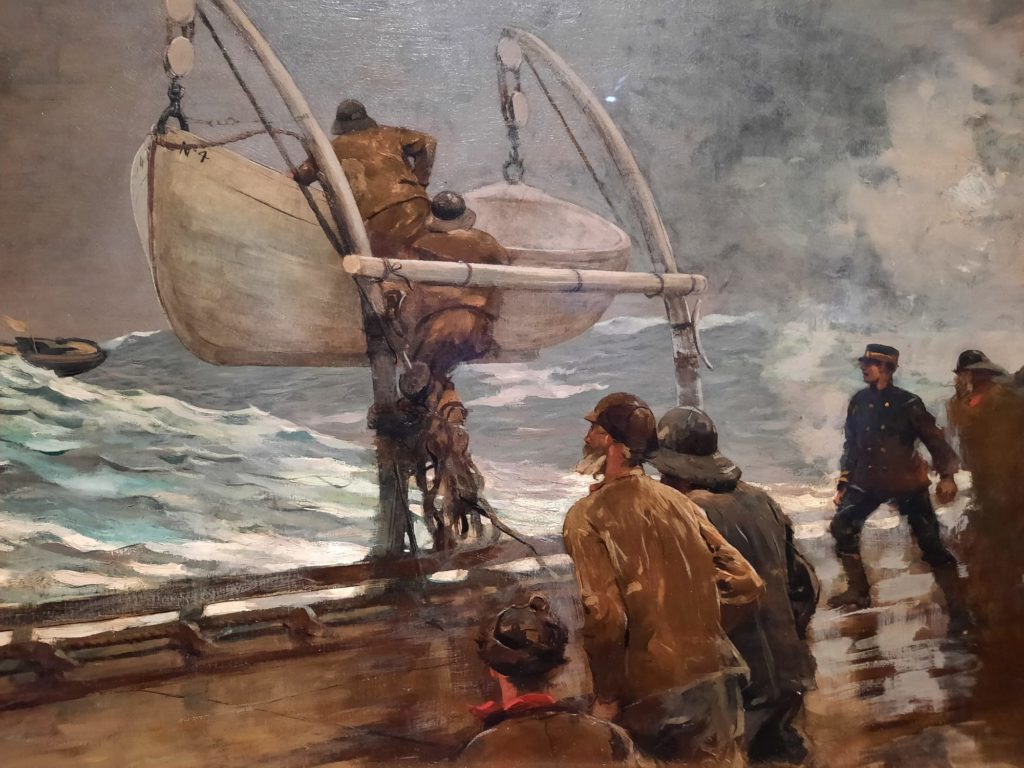
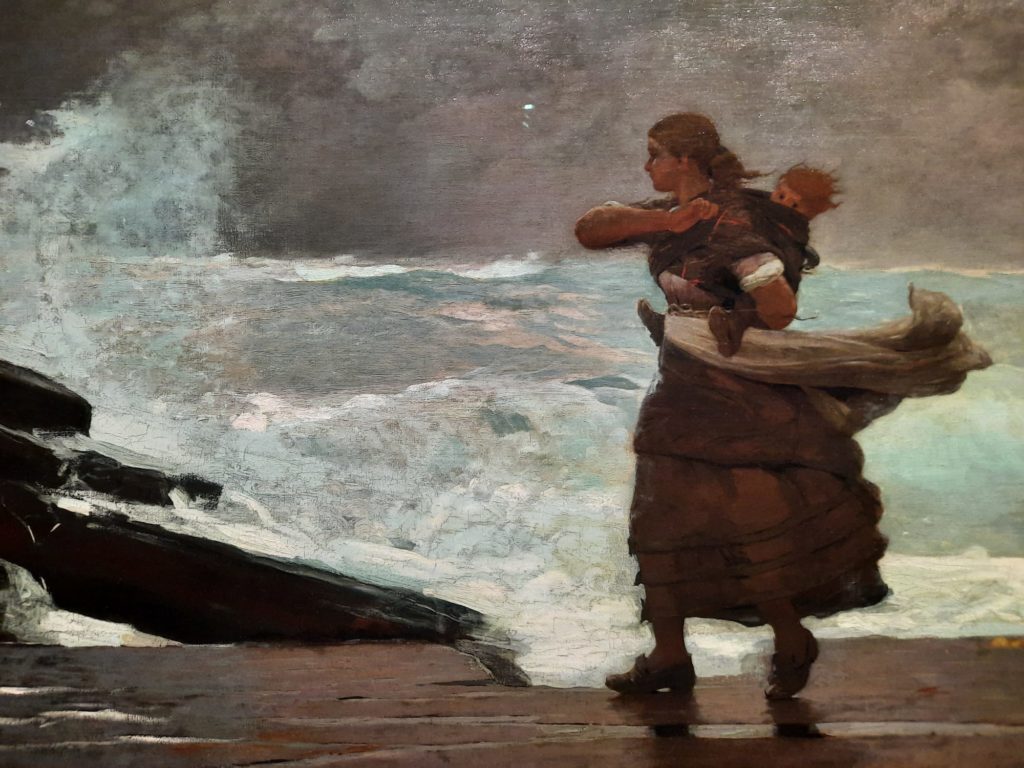
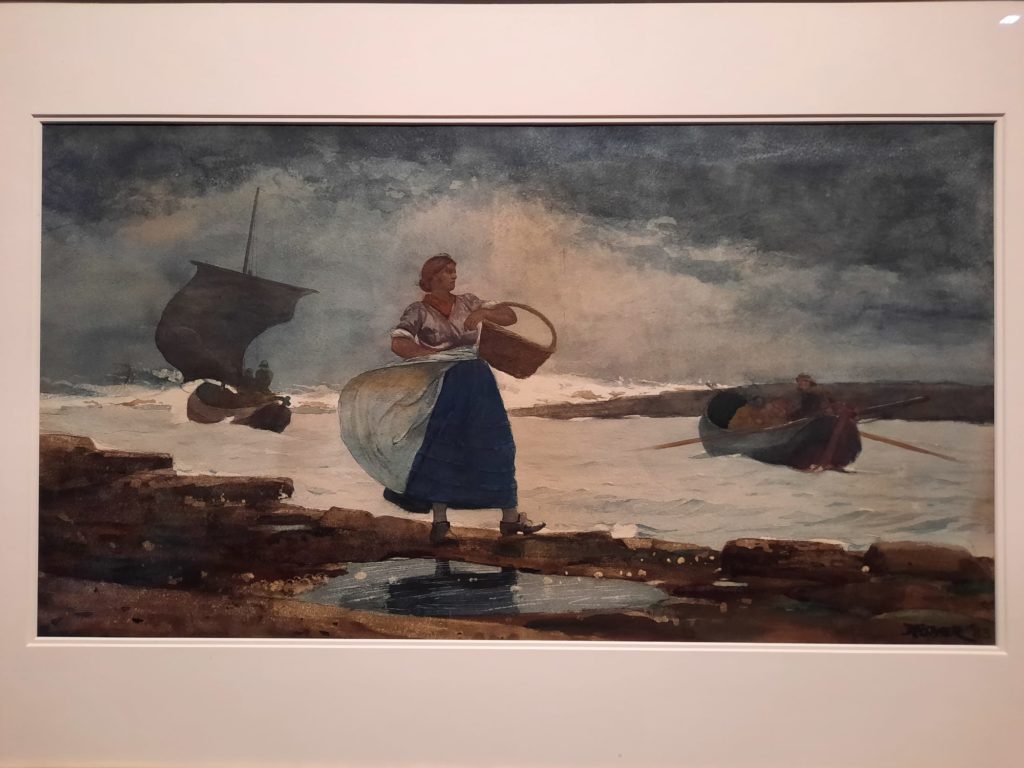
Winslow Homer: Maritime Artist
The second very strong theme which comes through in Homer’s paintings is the sea and the power of nature. Both the mighty, fearsome sea (during a stint in Cullercoats, then Northumberland, and later in Maine), and the warm, sunny (but shark-infested) waters of the Caribbean during summers spent there. Homer seemed fascinated with the powerlessness of man against the elements, and painted numerous scenes of disaster and rescue. He also painted awesome winter storms in later years, foregoing human subjects for the most part.
This seems in-keeping with what we learn of Homer as a person over the course of the exhibition. For me, being amused by such things, he seemed a delightfully curmudgeonly artist, exasperated by requests to ‘explain’ his work. One wall text, accompanying Hound and Hunter, includes the following:
“The critics may think that thar [sic] deer is alive but he is not, otherwise the boat & man would be knocked high & dry. I can shut the deer’s eyes, & put pennies on them if that will make it better understood.”
Winslow Homer | Hound and Hunter | American | The Metropolitan Museum of Art (metmuseum.org)
On another occasion he is quoted as saying he will not come to Thanksgiving with his brother as he’s busy painting. Homer certainly cultivated this hermit artist image, but his paintings seem to indicate that he did feel most at home at some remove from his human subjects.
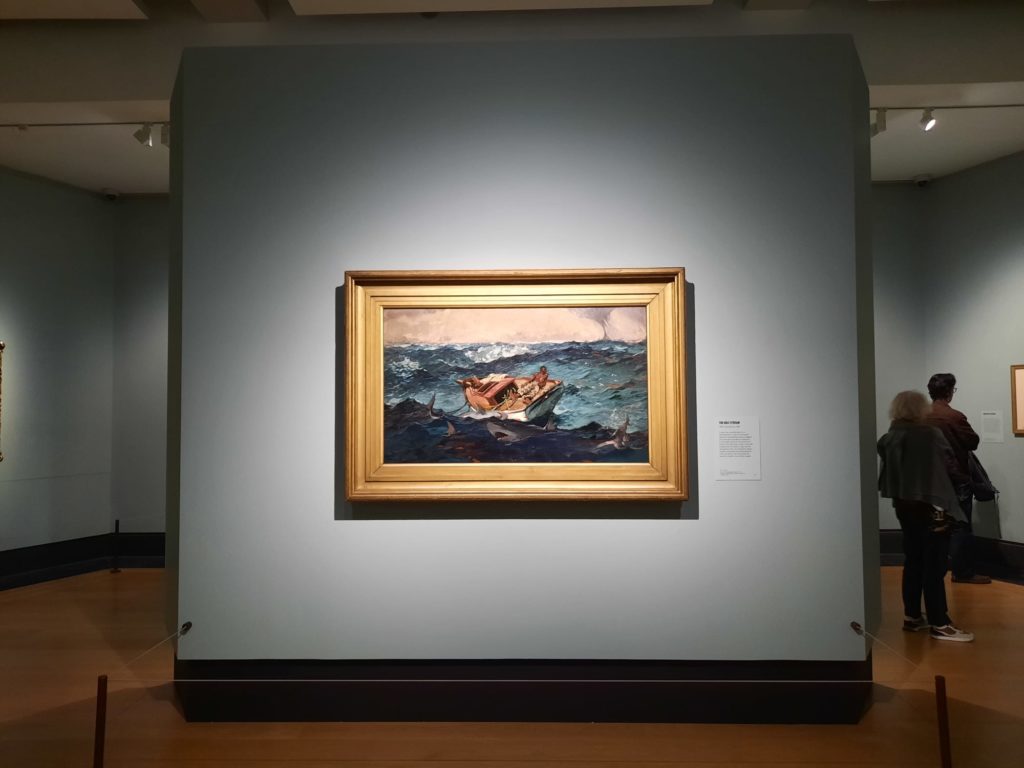
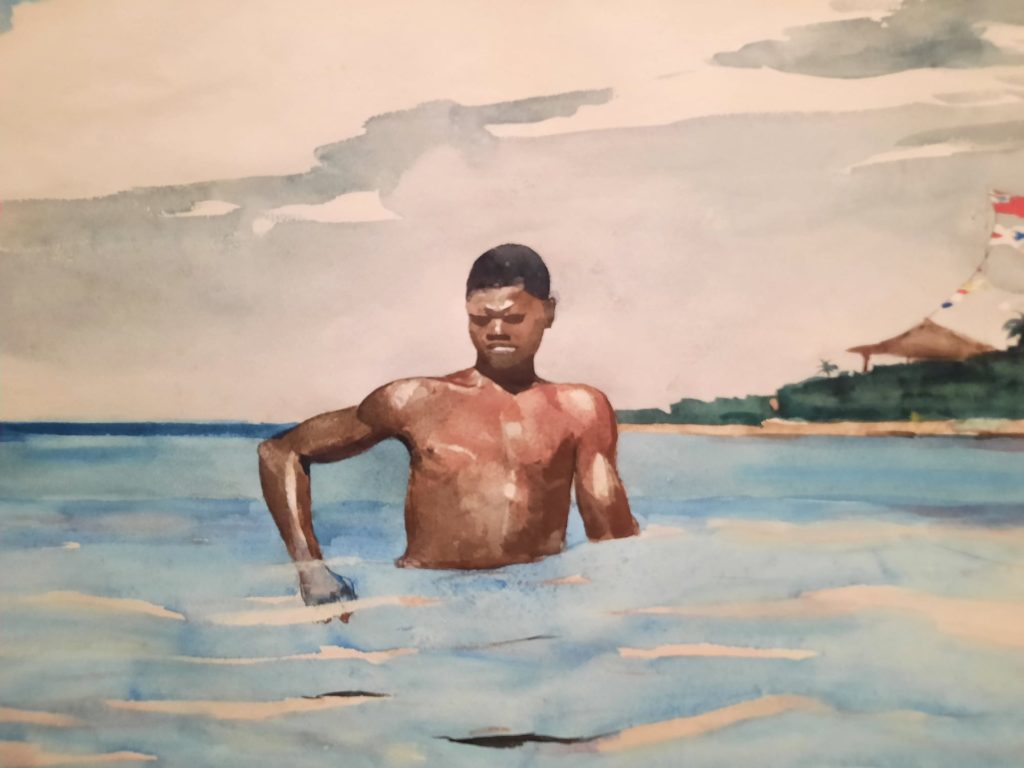
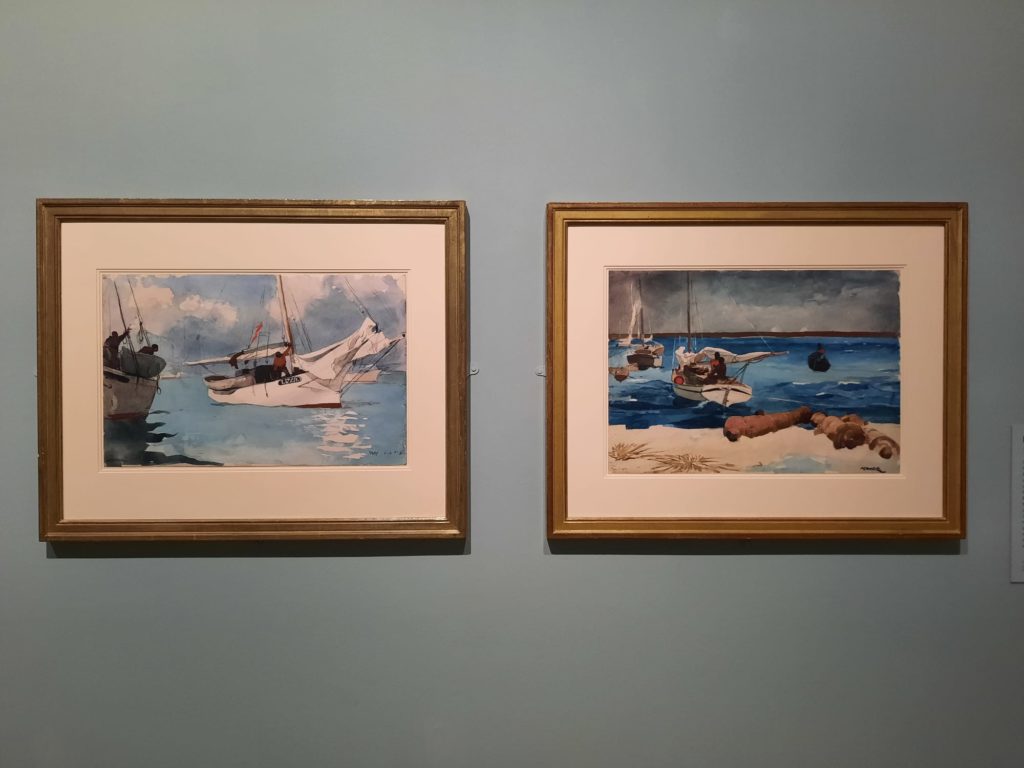
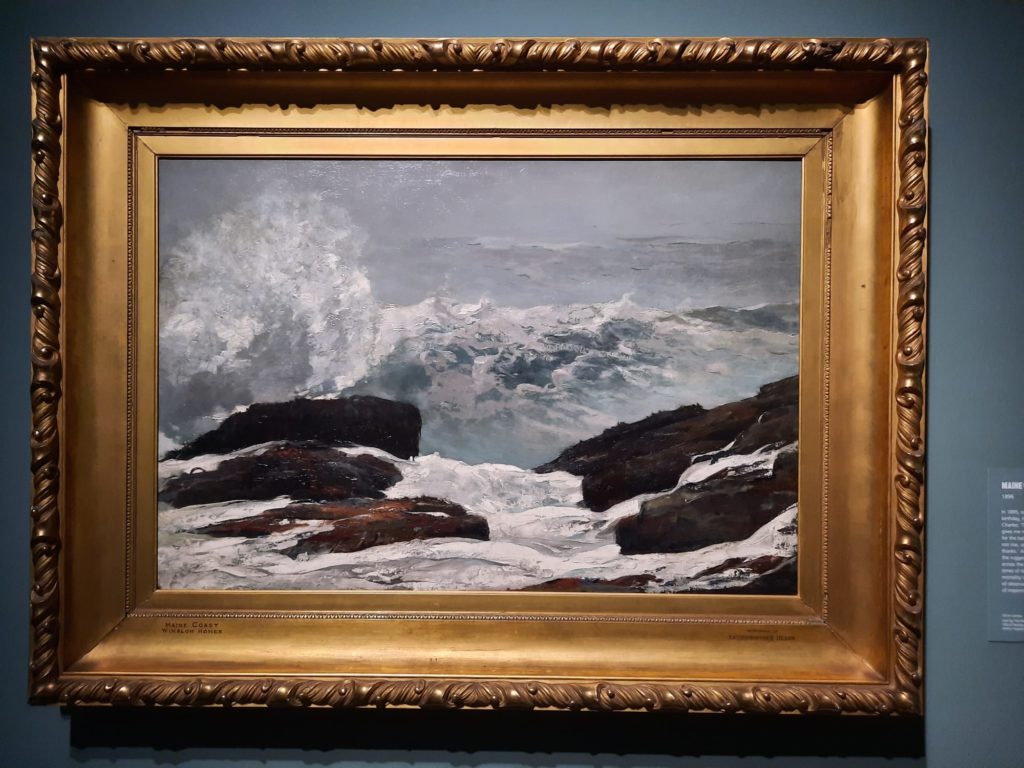
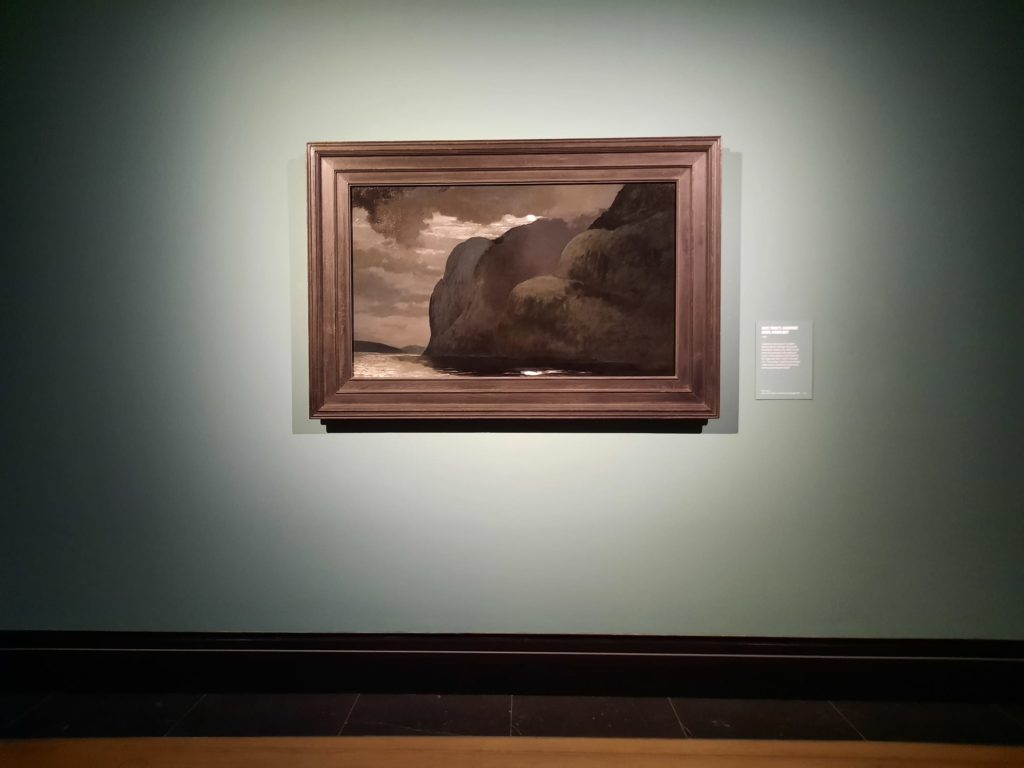
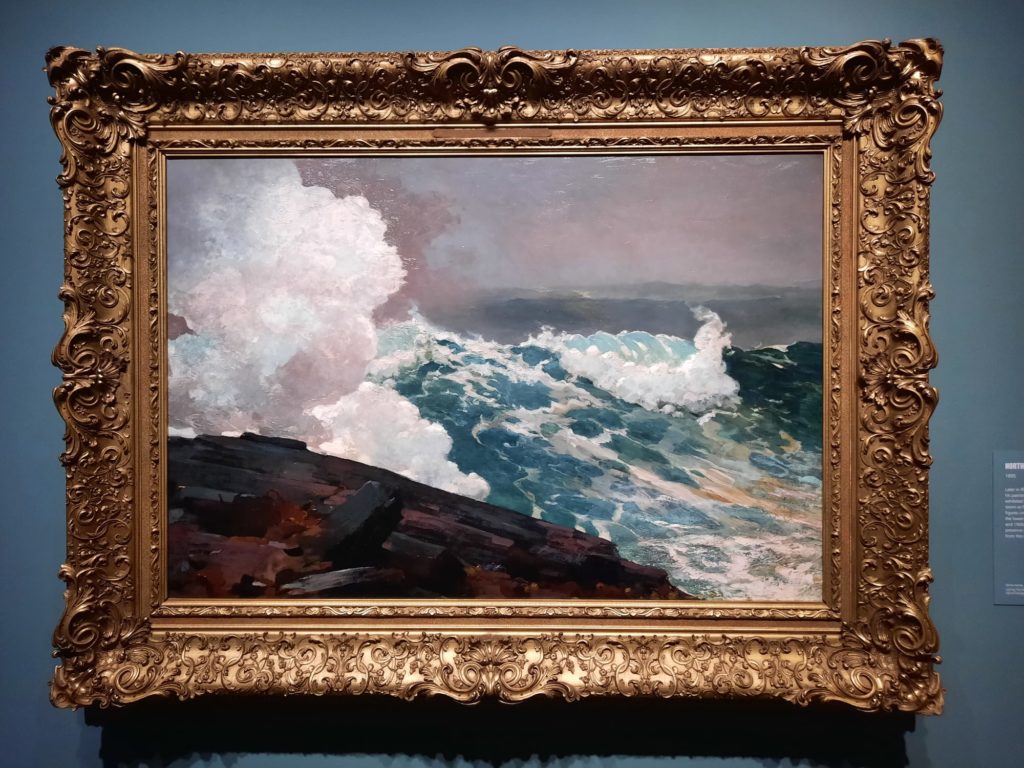
Final Thoughts On Winslow Homer: Force Of Nature
This is an excellent exhibition to see for several reasons. Firstly and practically speaking, monographic exhibitions of work by American artists tend to be a good opportunity to see artworks not frequently part of UK collections (as I also said regarding Milton Avery at the RA). One of my museological habits is checking all the labels to see where the loans in an exhibition come from, and Winslow Homer: Force of Nature is overwhelmingly drawn from American and private collections.
Secondly Homer is an interesting artist. I found him a little like a more academic Norman Rockwell. Undoubtedly very American, sometimes a little sentimental, but in the case of Homer demonstrating an artistic quality that has stood the test of time. With time on my side and a fairly quiet afternoon viewing slot I lingered in front of several canvases, taking in the detail but also the overall power of them.
Thirdly, it is very possible to draw comparisons between Homer’s art in the aftermath of the American Civil War, and contemporary US society. The deep divisions, the inequalities often along racial lines. What do the failures of Reconstruction tell us about the enduring nature of these challenges? Is it a matter, like the lone sailor of The Gulf Stream, of waiting for the inevitable, looking to the horizon for the slim home of a way out?
Salterton Arts Review’s rating: 4/5
Winslow Homer: Force of Nature on until 8 January 2023
If you see this after your page is loaded completely, leafletJS files are missing.

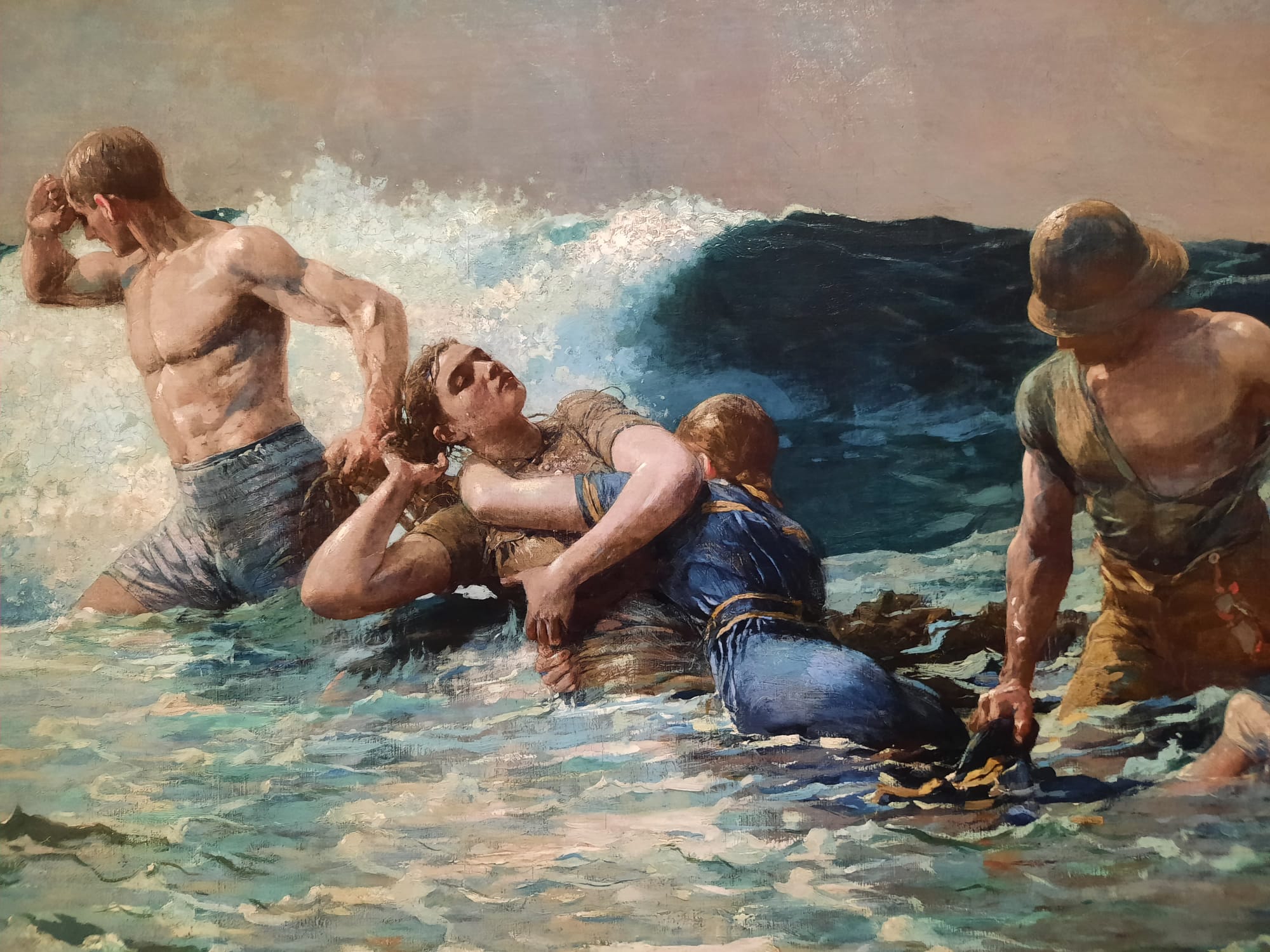
As soon as I scrolled through your photos I wondered if he was an illustrator and, yes, he was. The narrative, emotionality and composition seem to reflect that initial training.
How interesting, it shows the different insights fellow artists bring to their experience of an exhibition!